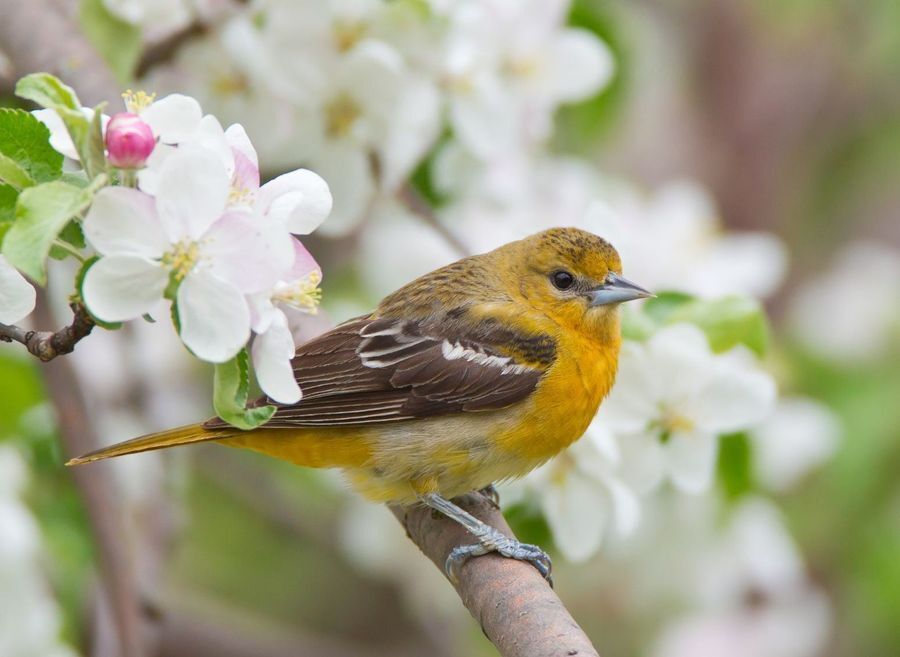Published on May 23, 2023
All About Amazing Orioles
By Laura Carberry
May is absolutely one of my favorite times of the year. Migration is in full swing, and the flowering trees bring back the Orioles! In Rhode Island we are lucky to have two different species: the Baltimore and Orchard Orioles. Attract these sweet, colorful birds to your backyard by planting flowering trees.
Most people are familiar with Baltimore Orioles. The males are hard to miss with their bright orange bodies, solid black head, and one white bar on their black wings. The females and immature males have a yellow-orange body color and grayish heads, with two wing bars. Female Baltimore Orioles turn more orange as they age, but do not have a dark head or back. Young males do not molt into their bright orange plumage until the fall of their second year. However, they can still successfully attract a mate before the molt.
-
Baltimore Orioles have successfully adapted to human habitats. They love parks, neighborhoods, and edges of forest. In fact, you will not find a Baltimore Oriole deep in the woods.
The female Oriole weaves a sock-like nest that hangs from a deciduous tree. The male may help bring nesting material, but it is the female who does the weaving. She then lays 3 to 7 eggs and incubates them for only 11 to 14 days. The nestlings are ready to fledge about 14 days after they hatch - that is incredibly fast!
Orchard Orioles are not as well known, but they do frequent New England as well. As their name implies, Orchard Orioles are drawn to flowering fruit trees. They can be found in parks, cemeteries, neighborhoods, and near waterways. The male Orchard Oriole has a deep-chestnut breast with a black head and throat. Females and immature males are yellow-green in color and the immature males will acquire a black throat patch as they mature. Their song is made up of sweet whistles that may sound like a Robin or Grosbeak – but listen for harsh churrs and chatters amongst the sweet notes.
The Orchard Oriole also makes a sock-like nest and often prefers to nest in a group near other Orchard Orioles. You might catch sight of their nests hanging over waterways. These birds spend very little time in Rhode Island. They arrive in mid-May, nest, and often leave as early as mid-July. Orchard Orioles spend most of their time in Central America.
Oriole Feeders at the Nature Shop!
Both species are drawn to Oriole feeders: structures which allow you to offer grape jelly in a cup or skewer an orange to the feeder. This feeder is a wonderful way to view Orioles when they come to feast!
Oriole feeders are available now at the Audubon Nature Shop in Bristol, or visit asri.org/NatureShop.
-
Laura Carberry is the Director of Properties at the Audubon Society of Rhode Island



















